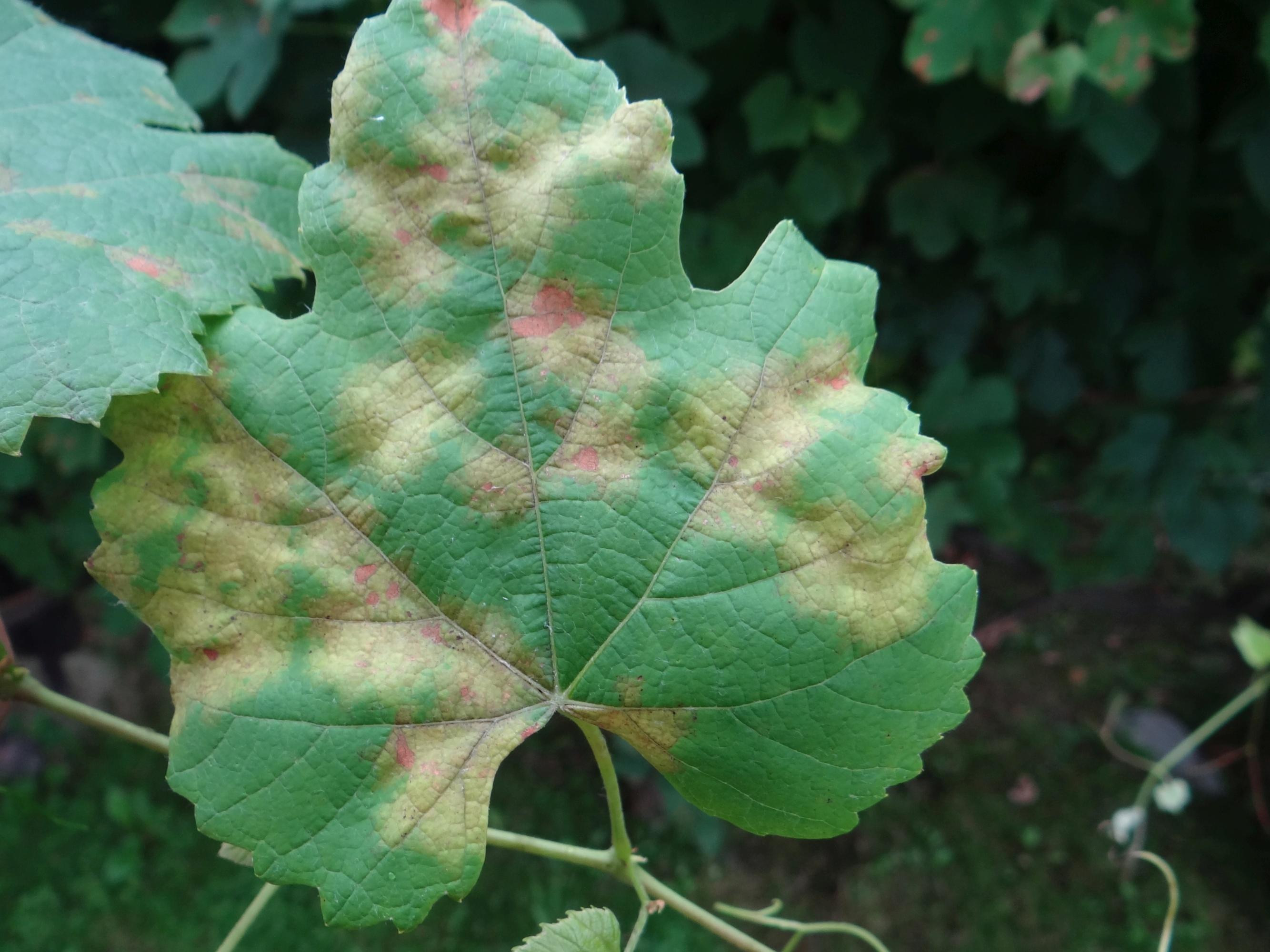
Downy mildew
Plasmopara viticola
What is Downy mildew (Plasmopara viticola)?
Grapevine downy mildew, caused by oomycetes, Plasmopara viticola, is highly destructive in Europe and the eastern half of the USA, causing significant grape production losses. It primarily affects leaves and shoots, exhibiting symptoms such as yellow oil spots, brown necrotic areas, white downy growth, and premature defoliation. Shoots may distort and collapse, while berries display thickened skin, distorted shape, reddish-brown color, and a mosaic pattern. The optimal temperature for P. viticola growth is 25°C, but rain is the main factor responsible for epidemics. This disease is widespread and poses a significant threat to viticulture worldwide.
How does Downy mildew (Plasmopara viticola) occur?
Plasmopara viticola, the grapevine downy mildew pathogen, reproduces through asexual and sexual means. Asexual reproduction involves spores released into the air or water, which then produce mobile zoospores that infect plants. Sexual reproduction occurs when compatible types produce oospores, capable of surviving in debris or soil. Oospores later germinate and release infective zoospores. This dual strategy aids in the pathogen's spread and persistence. However, the complex reproductive cycle poses challenges for disease control.
Symptoms
1 - Impact on Plants
Plasmopara viticola induces foliar damage, leading to leaf death. It also causes shoot and fruit damage, resulting in curled, twisted, stunted shoots, browning, shriveling, and reduced crop yield.
2 - Soil Health
Plasmopara viticola impacts the soil through residue accumulation, where infected plant debris accumulates and serves as a source of future infections. It also disrupts nutrient uptake and cycling in the grapevine-soil system.
3 - Impact on Environment
Plasmopara viticola affects biodiversity by impacting pollinators and natural enemies. It causes economic losses through reduced yields and compromised quality.
Solutions
1 - Preventions
• Choose grapevine cultivars that possess genetic resistance to Plasmopara viticola, reducing the susceptibility of the plants to disease. • Opt for vineyard sites that are well-ventilated and receive ample sunlight, as this helps minimize conditions favorable for Plasmopara viticola. • Employ techniques that improve air circulation and reduce leaf density within the grapevine canopy, discouraging the development and spread of the disease. • Regularly remove and dispose of any infected plant material to prevent the buildup of inoculum and minimize the risk of disease recurrence.
2 - Treatment
Common fungicides used for the control of grapevine downy mildew caused by Plasmopara viticola include copper-based fungicides, dithiocarbamates (mancozeb, maneb), phosphonates (potassium phosphite), QoI fungicides (azoxystrobin, pyraclostrobin), DMI fungicides (difenoconazole, propiconazole), and SDHI fungicides (boscalid, fluxapyroxad). The availability and usage of specific fungicides may vary by region and regulations. Consult local agricultural experts for region-specific recommendations.
